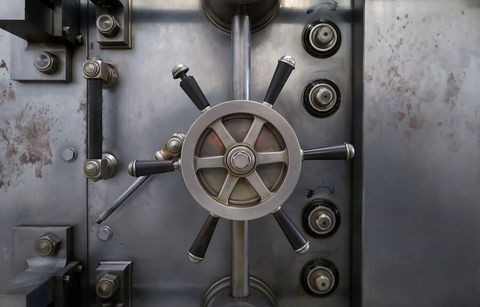Pricing in an Anti-Price Gouging World
Client Alert | 7 min read | 05.27.20
Many states have laws forbidding price gouging during an emergency. These laws, which vary significantly by state, seek to avoid predatory pricing behavior that takes advantage of a disaster situation like a hurricane or pandemic. The economics behind price gouging involves a surge in demand resulting in a temporary monopoly power for the party who has access to that good. Anti-price gouging laws are often triggered by a declaration of emergency and are part of a state’s consumer protection laws. These laws usually allow for recovery of all of the remedies available under a state’s consumer protection law, unless alternate remedies are specified. And while some states do not have specific price gouging laws, it is important to note that state Attorneys General have announced they will use their states’ consumer protection laws, which broadly prohibit unfair or deceptive practices, to combat price gouging during the COVID-19 crisis. While most companies would not actively engage in price gouging, the surge in demand for particular goods during an emergency often results in shortages, increasing supply costs along the supply and distribution chains. In the face of that, companies then must assess pricing in a way that allows them to cover their costs without violating anti-price gouging laws. At the end of this client alert, we provide a checklist to help companies think through pricing products that might be covered under state price gouging laws or subject to state Attorneys General scrutiny.
Lessons Learned
Attorneys General and private counsel have been on the watch for price gouging since the beginning of the COVID-19 crisis. Because of this, several large companies have become subject to Attorney General investigations, and others have been named defendants in class action lawsuits brought by unhappy consumers. For example, a recent California class action lawsuit accuses eBay and individual sellers of price gouging goods such as N95 masks by selling them at a high markup. In Texas, retailers have been sued for raising egg prices. Companies should treat these high-profile matters as lessons learned and become aware of the intricacies of price gouging laws to avoid liability as they are considering price increases. This awareness will be crucial in the current context, as food staples, PPE, cleaner supplies and other shortages continue, and basic economics (rising costs) will result in further necessary price increases.
Assessing State Anti-Price Gouging Laws
Companies should recognize, first and foremost, that each state’s price-gouging laws are different, and even small differences in these laws can greatly impact the risk of a contemplated price increase. Accordingly, each state’s law must be carefully and independently considered.
The factors to consider include:
1. Is your product covered?
The first factor to consider is what products are covered by each state’s price gouging law. If the product (or supply line for your product) is not covered by the law, the risk from a price increase will be low. While state anti-price gouging laws cover a wide variety of products, some laws only apply to a specific list of covered products. For example, Pennsylvania’s law broadly covers consumer goods, while Idaho’s only covers fuel, food, pharmaceuticals, and water. Other states indicate that their primary focus is on goods that will be in growing demand due to an emergency, and some, such as Vermont, are very limited as they only apply to fuel or petroleum. The state law’s definitions should be carefully analyzed in those states that enumerate only specific products that are covered. For example, “consumer food” items might include food for animals, as it does in Tennessee, and emergency supplies might include a flashlight or candle. On the other hand, “consumer goods” might actually be limited to emergency goods. In South Carolina, the law broadly covers “commodities,” but the definition indicates a focus only on emergency goods. The generality or narrowness of these definitions may be surprising, so they should always be taken into careful account.
In addition to enumerating products covered, price gouging laws may not apply at the supply level. Some laws only apply at the retail level, while others specify that they apply to any party within the chain of distribution. Others are silent. For example, New York’s law applies to all parties within the supply chain, while Connecticut’s and Washington D.C.’s are limited to retail. Companies should therefore carefully check both the supply level and goods covered under the law.
2. Is your product covered by an exception?
Second, companies should carefully check for applicable exceptions. Almost every price gouging law has some type of language allowing the pass through of increased supply costs. However, these laws sometimes contain vague language about the level of pass through costs allowed, particularly for maintaining profit margin. A few states, such as Utah and Washington, allow a price that represents the increased cost plus “customary markup,” capped at a percentage, usually 10%. Others, such as Wisconsin, do not allow for any increase above the increased cost, so no markup. However, terms such as “customary markup” are often undefined. Other states, such as North Carolina, only indicate that the pass through of increased costs is a factor to consider, rather than an automatic defense to a price gouging claim. It will be important for any company to consider permissive language related to supply cost increases, particularly if it seeks to maintain its profit margin rather than pass through costs dollar by dollar.
3. What is the price increase limitation?
Third, companies should assess what percentage of price increase is permitted. Many price gouging laws specify particular percentages above which companies cannot increase prices for covered goods. For example, Kansas allows for an increase of up to 25%, while Arkansas, California, and New Jersey only allow up to 10%. Some states, such as Connecticut, do not allow any price increase. Other laws, like those in Texas, broadly prohibit “unconscionable” or “excessive” price increases, and sometimes with these terms undefined. Some states, like Missouri, define these terms, but in separate portions of the statute, so finding and analyzing the definitions section should be of primary importance.
Companies should also ensure the law allows them to make a profit, and if so, how much of one. Some laws, such as Iowa’s, state that the supplier may continue to make a reasonable profit, and some cap the profit at a certain percentage, such as Maryland’s law, which allows an increase in value of profit by up to 10%. Other states, such as Oklahoma, specifically provide that no profit may be accounted for when making price increases. Language about allowances for customary markup will also be crucial in assessing whether the company may profit.
4. What price is the starting point?
Lastly, companies should assess what pricing consideration can be taken into account. For example, certain states’ price gouging laws provide exceptions for promotional pricing, for goods that were sold at a discount at the beginning of the emergency, or for seasonal fluctuations in price. Kentucky and Virginia, among others, allow an exception for a good sold at a reduced price, and South Carolina accounts for seasonal fluctuations. Other states, such as North Carolina and Pennsylvania, consider the increase in costs such as attendant business risk and taxes. Recent price gouging provisions, such as California’s Executive Order, also contemplate the possibility of negotiating a price with government entities.
Each of these steps will involve a deep dive into each state’s particular price gouging law and a careful consideration of the text of the law. The analysis may also require researching any announcements or actions the state’s Attorney General has made or brought in order to clarify the law’s scope and focus. However, carefully considering these questions will allow companies to correctly assess risks in their pricing plans and avoid future liability.
Pricing Checklist
1. Is the product covered by the price gouging law?
- Is the product enumerated? Does the law only contemplate emergency goods or any consumer goods? Is it primarily in place for Personal Protective Equipment (PPE)?
- Are there definitions for general words such as “consumer goods,” “emergency equipment,” or “consumer food items”? The narrowness or generality of these definitions may be surprising.
- Consider whether the law only applies at retail only versus retail plus any party in the supply line.
2. Are there exceptions, particularly for increased supply costs?
- Many states provide exceptions for increased supply costs, as well as fluctuations that occur in the regular course of business.
- What, if anything, does the law say about the type of increased costs that are exempted? What type of pass-through costs does it contemplate?
3. What is the amount of price increase allowed, and does it account for profit?
- Some laws forbid any price increase, while others allow an increase of up to 25%.
- Some laws specifically allow a company to make its usual profit, while others specify a ceiling for a percentage increase above cost plus normal markup, without defining what “normal markup” means.
4. Does the law provide exceptions for previous promotional pricing or other unique situations?
- Several laws explicitly exempt products that were subject to a sale or other promotional pricing at the beginning of or prior to the emergency.
Want to learn more on this topic, and have the opportunity to ask questions? Please join us on June 2, 2020 for our webinar, Pricing Items in an Anti-Price Gouging World.
Contacts
Insights
Client Alert | 3 min read | 11.19.24
In a recent UK Court of Appeal judgment in what is known as “the motor finance cases” (see Johnson v FirstRand Bank, Wrench v FirstRand Bank and Hopcraft v Close Brothers Limited, which appeals were all heard together), the Court has shone a spotlight on the issue of commissions paid by financiers to brokers and determined that, in some cases, they may be considered “bribes” under UK law.
Client Alert | 2 min read | 11.14.24
Client Alert | 8 min read | 11.12.24




